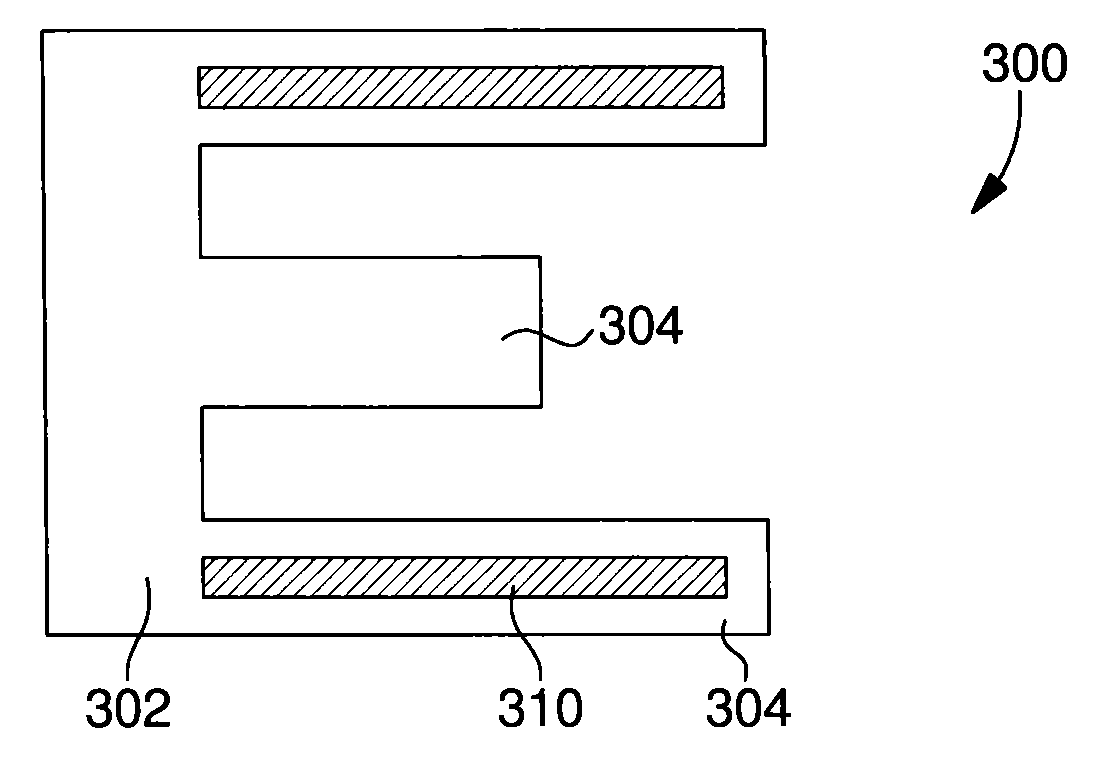Method for creating a resonator
a resonator and resonator technology, applied in the field of creating resonators, can solve the problem of not being able to produce hollow parts with straight sides or walls
- Summary
- Abstract
- Description
- Claims
- Application Information
AI Technical Summary
Benefits of technology
Problems solved by technology
Method used
Image
Examples
Embodiment Construction
[0067]FIGS. 4 and 5 show schematic views of a component according to the present invention.
[0068]The component 101, manufactured in accordance with the method of the present invention, is a resonator 300. A conventional resonator, shown in FIG. 1, includes a body 100 used in deformation. This body 100 takes the form of a base 302 placed on a support base 306 and from which extend at least two parallel arms 304. These two parallel arms 304 carry metallisations which form, on the arms, two groups of electrodes 308 for subjecting them to electrical fields and making them vibrate. Resonator 300 further includes, on base 302, connection pads 309, respectively connected to groups of electrodes 308 as seen in FIG. 5. Each arm 304 includes an upper surface 314 and a lower surface 316. The typical dimensions of this type of resonator 300 are: length 1 mm, width 0.1 mm, thickness 0.1 mm. The resonator also has sides or walls 311.
[0069]In order to improve the characteristics of resonator 300, ...
PUM
| Property | Measurement | Unit |
|---|---|---|
| thickness | aaaaa | aaaaa |
| width | aaaaa | aaaaa |
| length | aaaaa | aaaaa |
Abstract
Description
Claims
Application Information
 Login to View More
Login to View More - R&D
- Intellectual Property
- Life Sciences
- Materials
- Tech Scout
- Unparalleled Data Quality
- Higher Quality Content
- 60% Fewer Hallucinations
Browse by: Latest US Patents, China's latest patents, Technical Efficacy Thesaurus, Application Domain, Technology Topic, Popular Technical Reports.
© 2025 PatSnap. All rights reserved.Legal|Privacy policy|Modern Slavery Act Transparency Statement|Sitemap|About US| Contact US: help@patsnap.com



